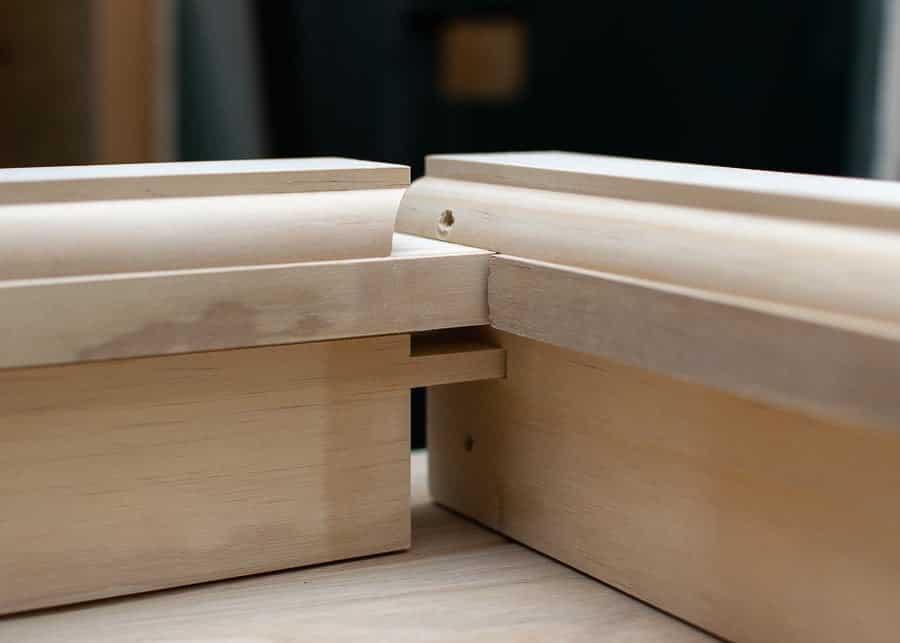The mortise and tenon joint has been in use in construction for thousands of years. The Romans used it to build forts and temples, the Ancient Egyptians used it to construct sarcophagi, and it was even used in Stonehenge! It wasn’t always used for doors, however…
The very earliest types of wooden door were made of planks of timber, pegged together with wood or nailed with iron. They were simple to construct, and suited people at a time when homes might come under attack at any moment. Furniture was rudimentary, too. Made of planks or slabs of wood, it needed to be possible to collapse and move – or abandon – at short notice.
This kind of basic plank construction, although handy, had its drawbacks. The wood – which was often unseasoned – would warp and crack as the planks dried out and shrank. As society began to stabilise and homes became more permanent, people started to invest time and money in more complex carpentry. Carpenters realised that by using mortise and tenon joints in furniture, they could avoid the problems caused by warping.
First, they created a stable mortise and tenon frame, then inset wooden panels within it. The wooden panels were able to expand and contract without causing any damage to the structure as a whole. The mortise and tenon framework held everything secure. Suddenly, it was possible to craft attractive, strong pieces of furniture that would really stand the test of time. Furniture-making had been revolutionised!
Although this panelling technique was used in furniture-making from medieval times onwards, it wasn’t until the eighteenth century that it became typical in door construction. Panelled doors grew in popularity during the Georgian period – the Georgian front door is a beautiful, classic design that is still very much in demand today. Although the look of panelled doors has evolved through different fashions and time periods – Victorian front doors, Edwardian front doors, and 1920s and 1930s front doors all have their own distinctive styles – the mortise and tenon joint has remained a crucial part of traditional hardwood door construction.
This kind of craftsmanship is at the very heart of what we do at Cotswood Doors, too. Over our 40 years of experience, we have developed our own particular door construction technique that is based on strong wedged mortise and tenon joints. Just like those furniture makers of centuries ago, we have found that it is the best way to create beautiful, sturdy, lasting carpentry. Why not take a look at our gallery to see some of our most recent work?


